The PreSonus Eris Studio 5 monitor is an affordable fit for home studios
PreSonus revamps its Eris line with options at a range of prices and sizes. How will the entry-level Studio 5 shape up?
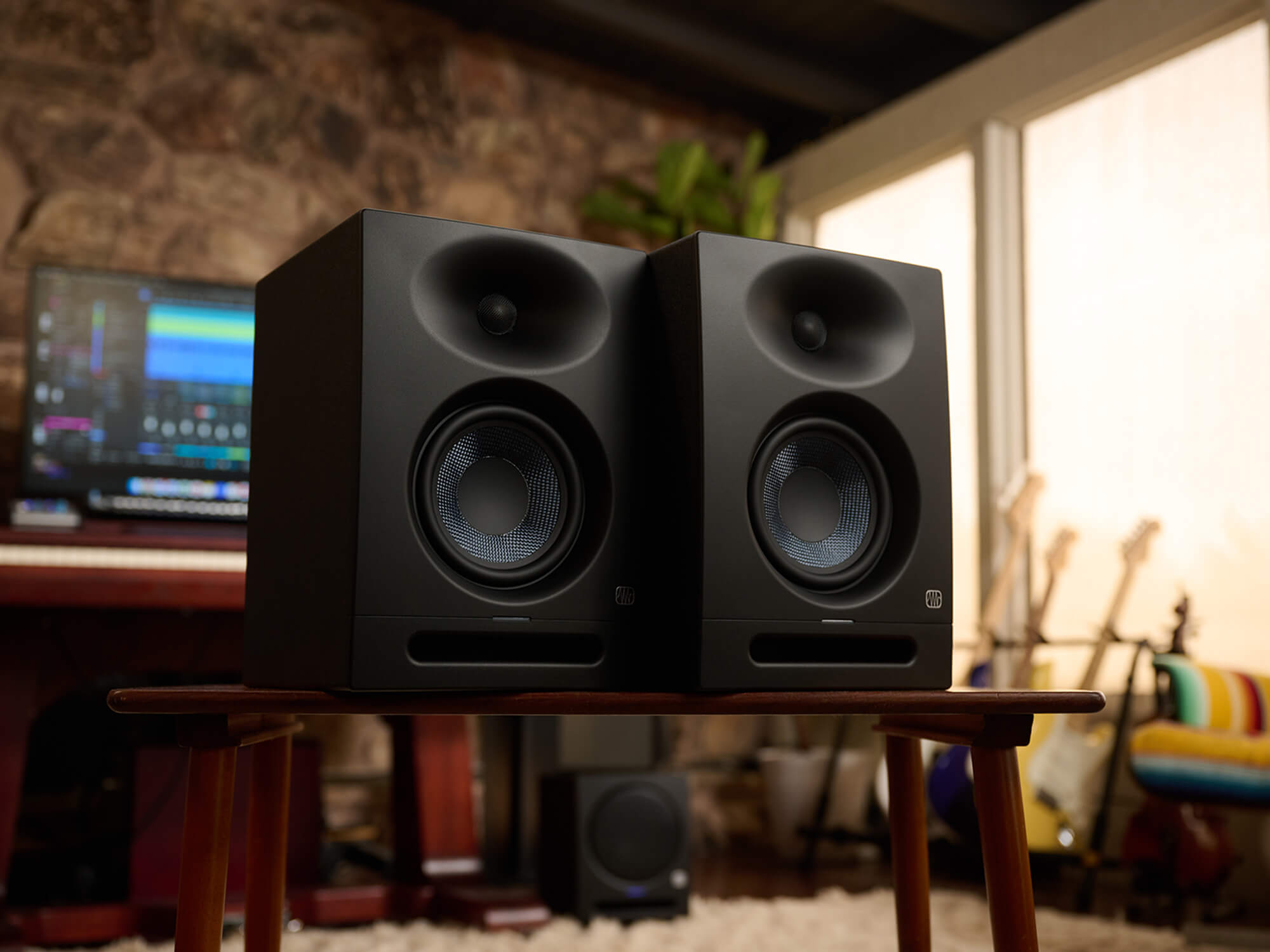
PreSonus Eris Studio 5 monitors in a home studio
Review Overview
Our rating
8
Our verdict
⊕ Nice look and solidly build
⊕ Keenly priced
⊕ Standby mode is handy
⊖ No desktop filter
⊖ Self noise that may prove annoying
£159 / $199 each, presonus.com
At £159, you might wonder how effective the PreSonus Eris Studio 5 monitors really are.
Stepping up from the PreSonus Eris E line, the new Eris Studios have a premium look that’s reminiscent of revered Neumann monitors, with stylish lines, a handy LED to indicate status plus a welcome standby function. Price wise, though, these monitors compete with the likes of Adam Audio’s TV5 and the Yamaha HS5, among others. And you might get more than you bargained for.
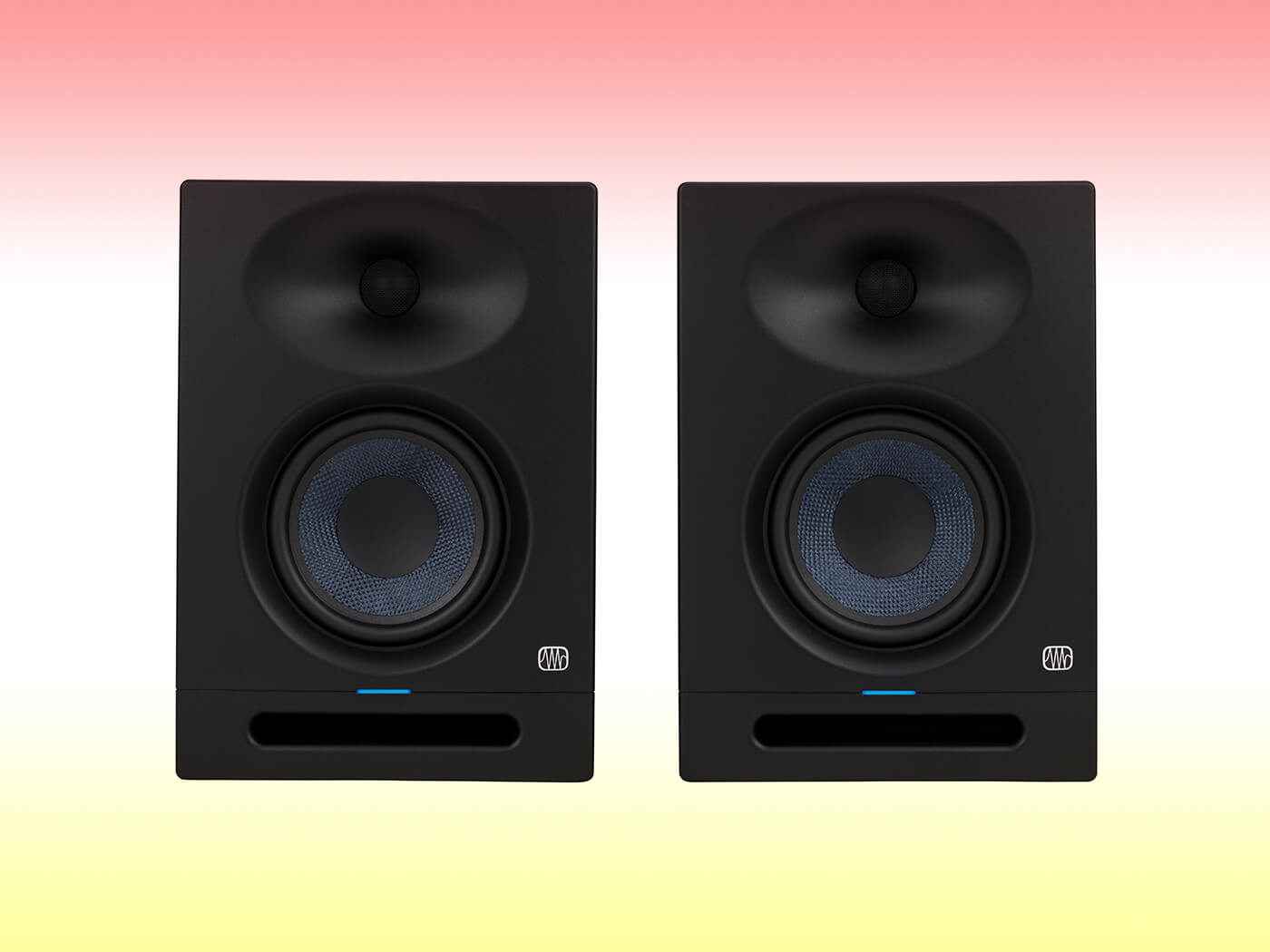
What drivers and EQ controls do the Eris Studio 5 monitor have?
As the name suggests, the Studio 5 has a 5.25-inch fibreglass composite woofer for bass and mids, with a one-inch silk dome tweeter for the highs. Amplification power of 80 Watts is shared between the drivers and the published frequency response reaches down to 45 Hz (of course, with considerable attenuation expected that low down).
Helpfully, you can plug in using a choice of balanced XLR or TRS jacks, or unbalanced RCA. There’s also a variable gain pot to establish a healthy input level, although you need to take care when matching-up right and left, since the dial doesn’t have detents.
Eris Studio 5’s EQ tools include a high shelf fixed at 10 kHz and a mid band centred around 1kHz. There’s no function to boost the bass, but there are a couple of ways to cut bass: firstly, a two-position low-cut filter can be used when pairing the Studio 5s with a subwoofer (PreSonus is also selling an Eris sub); and secondly, an Acoustic Space switch (-2dB and -4dB options) which applies a shelving cut at 800 Hz to counteract bass build-up when the speakers are situated in room corners or close to walls.
All the controls are immediate and easy to get to grips with but unfortunately there’s no desk filter to cut low-mid humps that often occur when sitting monitors on a desk. This is a bit of a drag, given that these are supposedly designed for home studios, where monitors are likely going to be placed on a desk.
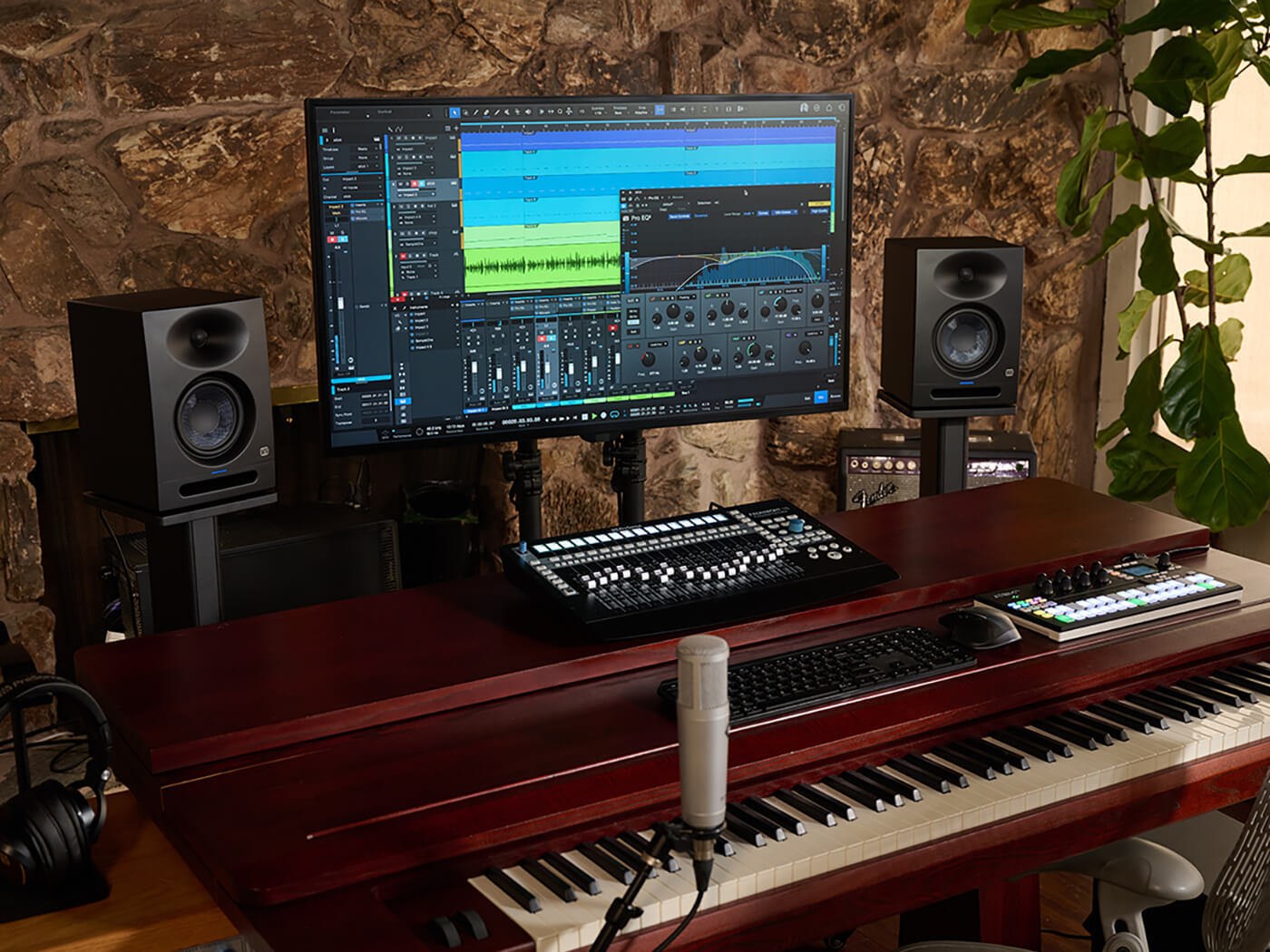
How do the Eris Studio 5 monitors sound?
The Studio 5s have more bass articulation and depth than you’d expect at the price, sounding more punchy in this department than the 4-inch KRK monitors we tested previously (admittedly these have a smaller case and footprint). Plus, the Studio’s front-firing ports help reduce the effect of proximity to walls, giving clearly defined bass and kick lines.
Like many two-way designs, mid frequencies on the Studio 5 seem slightly scooped, and we boost these a notch around the back (the band affected could do with being a touch broader). High frequencies seem a little brash out at the default 12 o’clock position, so we’re thankful for the facility to roll these off ever so slightly.
In use, we really do miss having a desktop filter, and we experience overly-bulky low mids that need to be tamed with a software solution. Since potential users of this entry-level line might not have the budget or inclination to go down the room equalisation route — or equivalent — it’s an unfortunate omission by PreSonus.
There’s also a bit of unwanted noise to contend with, as is often the case with active monitors. With the Studio 5, the hiss is not usually sufficient to distract you from your work when not using the monitors, but more annoying — in our studio at least — is a lower-frequency hum/vibration. If you’re working at close range and you’re one of those people that notices every tiny noise, then it might cause annoyance.
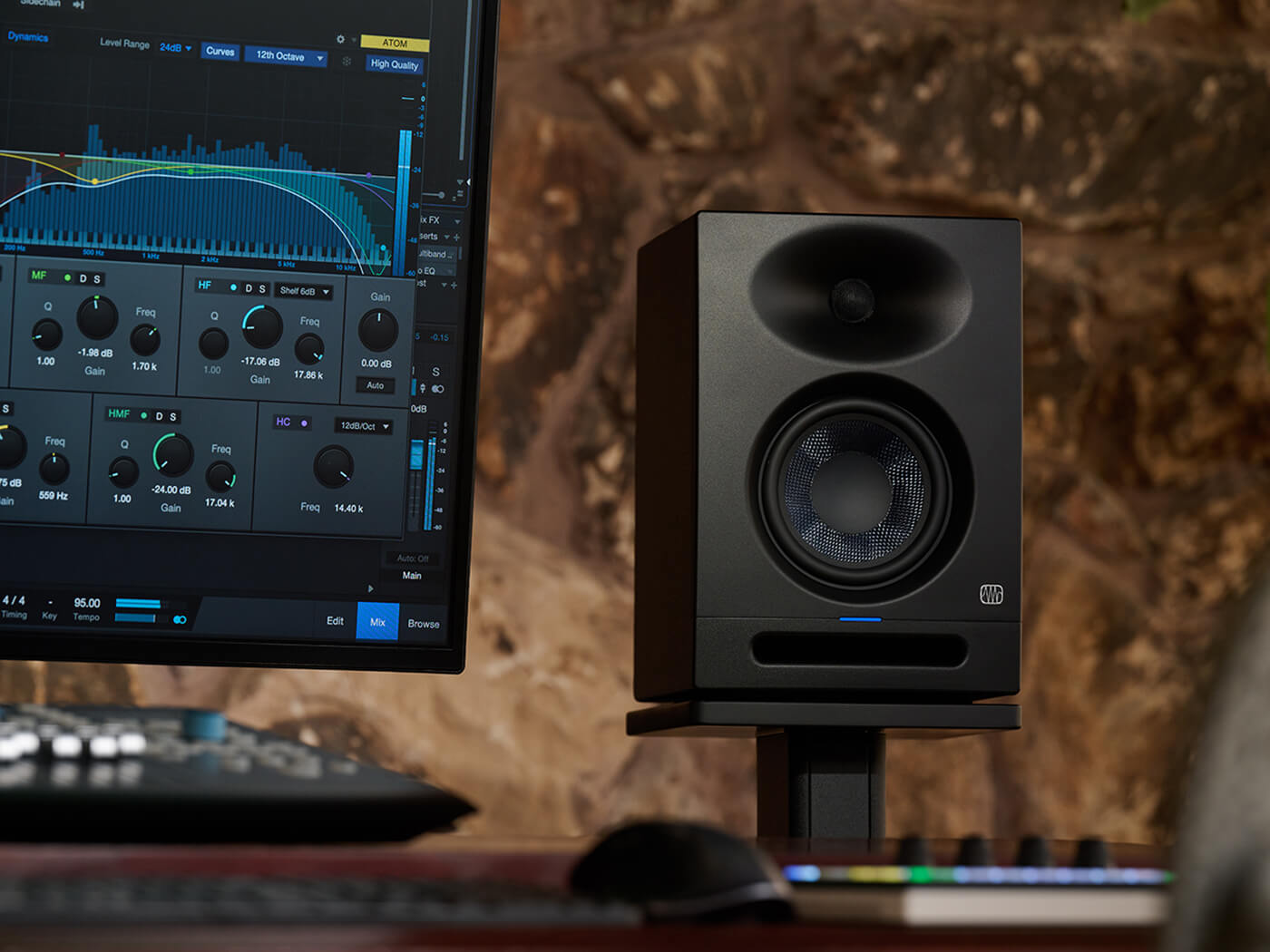
Listening in with the Eris Studio 5
We test the Studio 5s on a wide and eclectic range of listening material, but ultimately call upon two favourite references to sum up our impressions.
Jacques Loussier’s jazz-funk rendition of Bach’s Little Fugue demonstrates the Studio 5’s capable articulation at both ends of the spectrum, with just the right amount of crispness in snare lines plus really punchy double bass riffs and clear transients and sustain from the kick.
Meanwhile, in Naughty Boy’s ear-worm La La La, there’s a clear presentation of high-mid snare crack that’s not overly harsh, with the vocals sitting nicely on top. There’s some welcome bass punch, but the lowest octave of the sub-bass elements is largely missing in action — not a surprise for drivers of this size, of course.
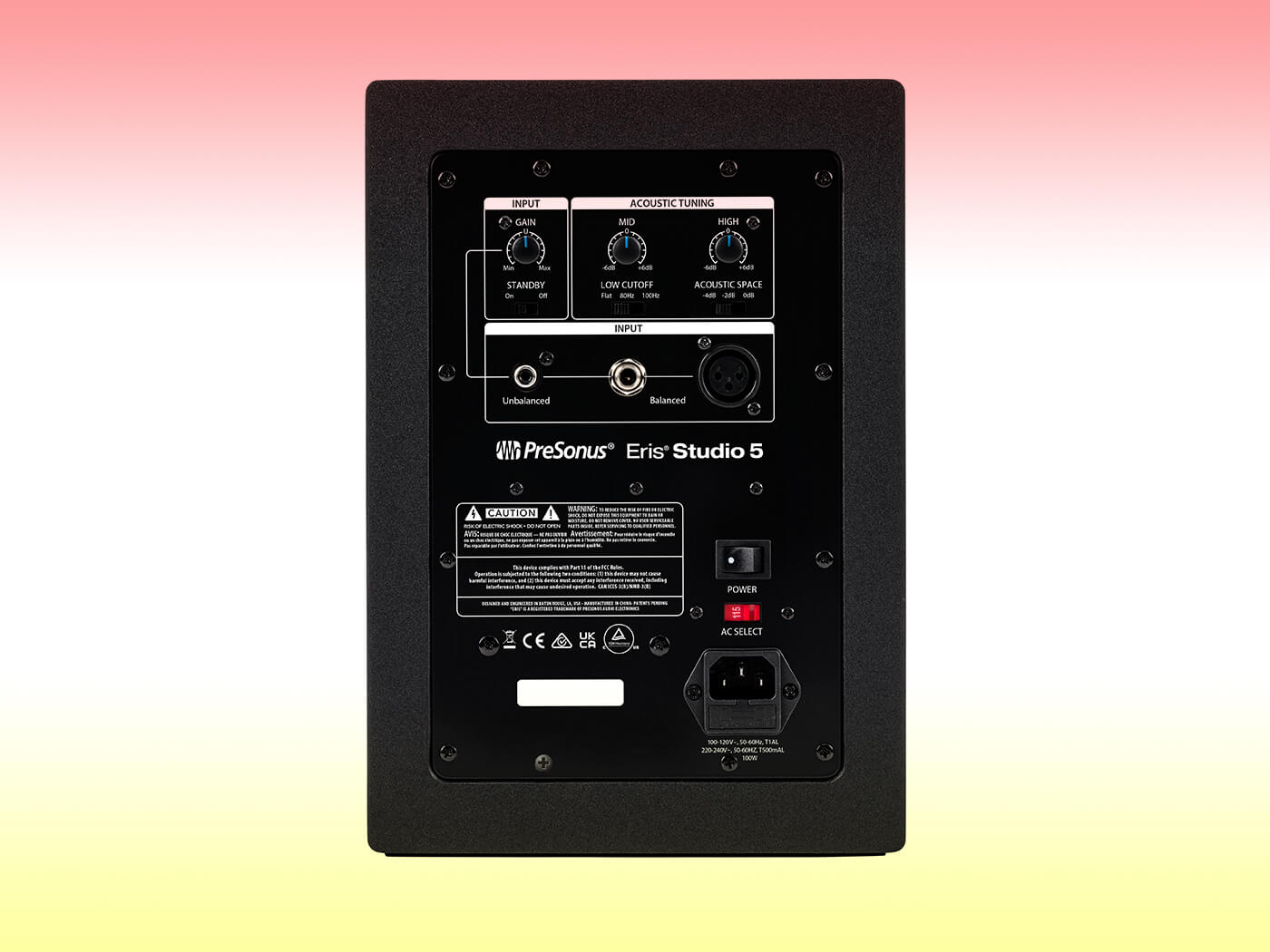
Should I buy PreSonus Eris Studio 5 monitors?
If the lack of desktop filter and self noise aren’t a deal-breaker, then these are a solid purchase for folks with a limited budget. They’re not too big to use on a desk at home, their front ports mean that they’re more happy being placed near to walls and corners than other designs and they look and sound really good for their asking price.
There are limitations at this size. A five-inch monitor won’t give you earth-shattering bass and will likely sound a bit boxy compared to bigger models, but they make up for this with tight bass articulation that proves helpful when making mixing decisions.
Key features
- Active studio monitors
- 5.25-inch woofer; 1-inch tweeter
- Front ported
- 45 Hz – 20 kHz frequency response
- EQ customisation: High and Mid dials (-/+ 6 dB at 10 kHz and 1 kHz); Low Cut filter (80 Hz / 100 Hz); Acoustic Space switch (-2 dB / -4 dB)
- Inputs: XLR, TRS jack and unbalanced RCA
- Variable input gain
- 80 W amplifier (45 W woofer/35 W tweeter)
- Standby mode